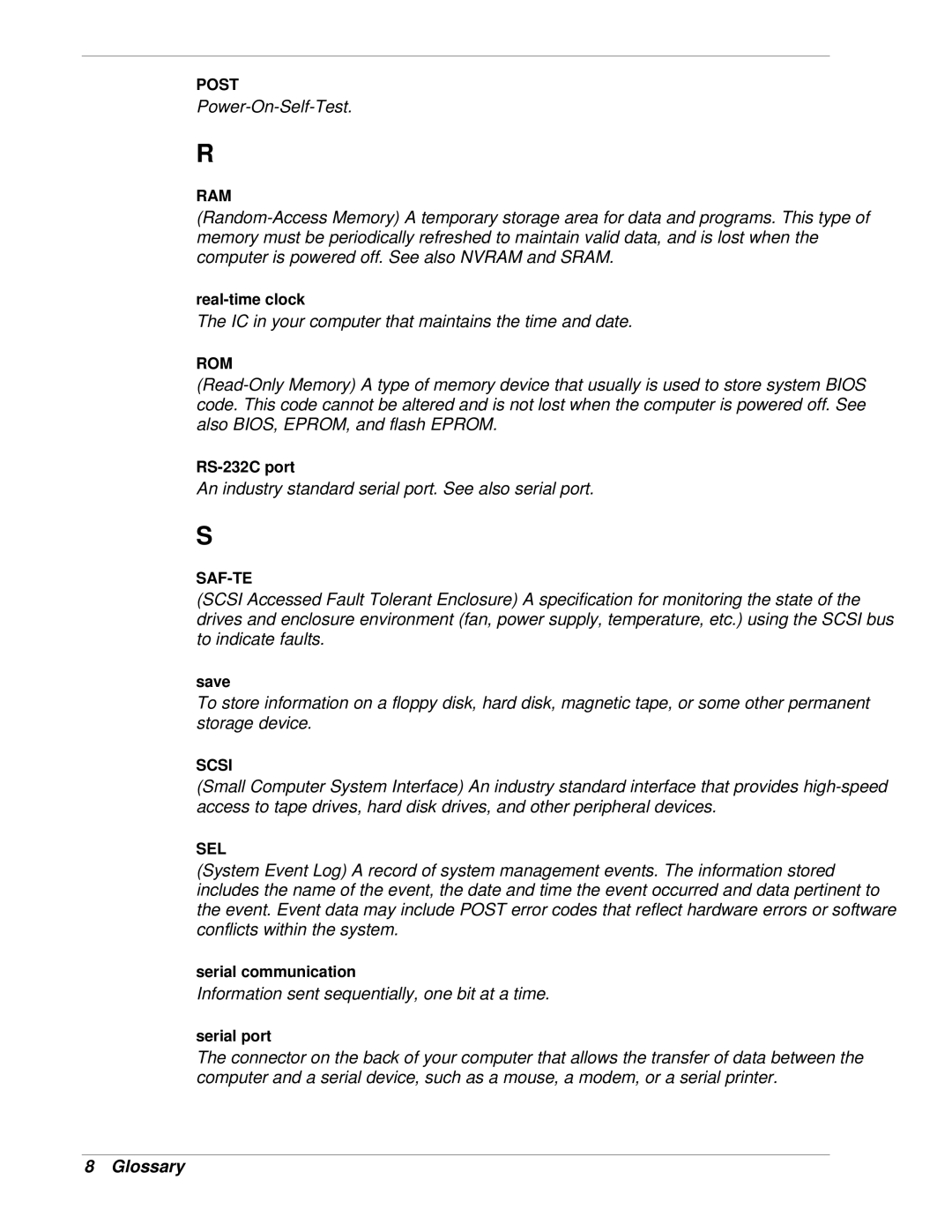
POST
Power-On-Self-Test.
R
RAM
The IC in your computer that maintains the time and date.
ROM
An industry standard serial port. See also serial port.
S
(SCSI Accessed Fault Tolerant Enclosure) A specification for monitoring the state of the drives and enclosure environment (fan, power supply, temperature, etc.) using the SCSI bus to indicate faults.
save
To store information on a floppy disk, hard disk, magnetic tape, or some other permanent storage device.
SCSI
(Small Computer System Interface) An industry standard interface that provides
SEL
(System Event Log) A record of system management events. The information stored includes the name of the event, the date and time the event occurred and data pertinent to the event. Event data may include POST error codes that reflect hardware errors or software conflicts within the system.
serial communication
Information sent sequentially, one bit at a time.
serial port
The connector on the back of your computer that allows the transfer of data between the computer and a serial device, such as a mouse, a modem, or a serial printer.
